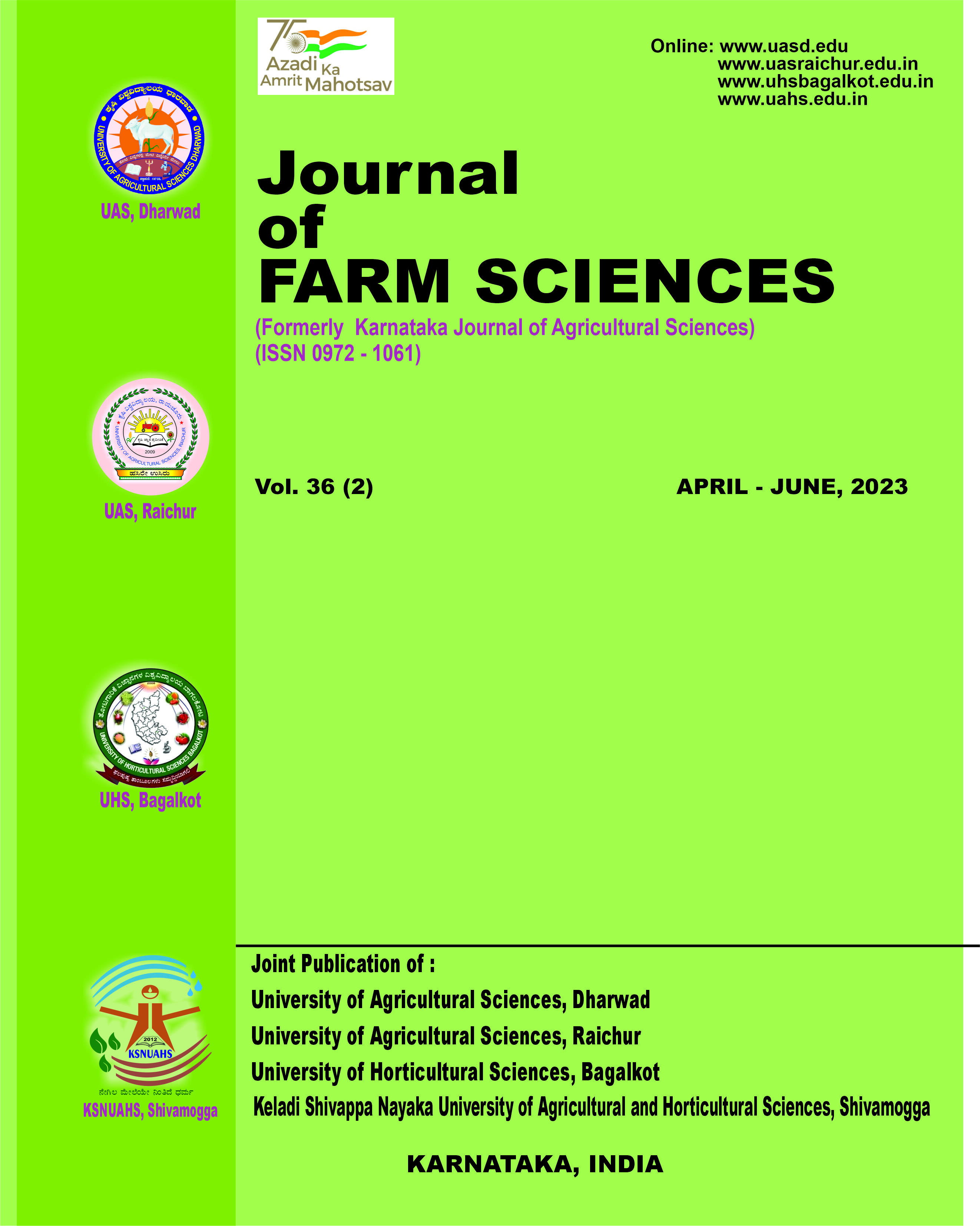Population dynamics of major insect pests and their natural enemies in brinjal ecosystem
Keywords:
Abiotic factors, Aphid, Brinjal, Leaf hopper, Population dynamics, Whitefly
Abstract
The field experiment was carried out at College of Agriculture, Vijayapura to study population dynamics of majorinsect pests and their natural enemies in brinjal ecosystem. The present study revealed that peak activity of sucking pestviz., aphid (Aphis gossypii Glover), leafhoppers (Amrasca bigutulla bigutulla Ishida) and white flies (Bemesia tabaciGennadius) was during 9th, 5th and 13th standard meteorological week (SMW) respectively. Per cent shoot damage byLeucinodes orbonalis (Guenee) was peak during 3rd SMW (51.72% shoot damage) and minimum incidence (1.26%) wasobserved during 10th SMW. Per cent fruit damage was maximum during 13th SMW (58.49%) and minimum (16.8%) during4th SMW. The coccinellid population was substantially associated with the aphid population. During 9th SMW, populationwas at its peak (3.62 adults/ grub/plant), whereas, least activity of coccinellid was noticed during 13th SMW (0.13 adult/grub/plant). The correlation studies indicated that, maximum temperature had significant positive correlation with per centfruit damage, leaf hoppers, aphids and white flies (r= 0.961**, 0.682**, 0.725** and 0.933** respectively) and non-significantly negatively correlated with per cent shoot damage (r=-0.362NS). Morning relative humidity showed significantnegative correlation with per cent fruit damage, leaf hoppers, aphids and white flies (r= -0.879**, -0.789**, -0.883** and-0.887**, respectively). Evening relative humidity showed significant negative correlation with per cent fruit damage, leafhoppers, aphids and white flies (r= -0.845**, -0.940**, -0.922** and -0.921**). The correlation of aphids, leaf hoppers,white flies and per cent shoot damage with sunshine duration was positive and significant (r=0.677**,0.750**, 0.473*and0.549* respectively). Per cent fruit damage had shown positive and non-significant correlation with sunshine duration(0.338NS). Rainfall showed negative and significant correlation with aphids, leaf hoppers, white flies (r= - 0.500*, -0.565**, -0.461*) and non-significantly negatively correlated with per cent shoot damage and per cent fruit damage (-0.360NS and - 0.340NS).
Published
2023-03-20
How to Cite
PRASHANTH, G., SUNITHA, N., & CHAVAN, S. (2023). Population dynamics of major insect pests and their natural enemies in brinjal ecosystem. Journal of Farm Sciences, 36(01), 75-80. https://doi.org/10.61475/jfm.v36i01.345
Section
Research Article
Copyright (c) 2023 Journal of Farm Sciences

This work is licensed under a Creative Commons Attribution-NonCommercial-NoDerivatives 4.0 International License.


